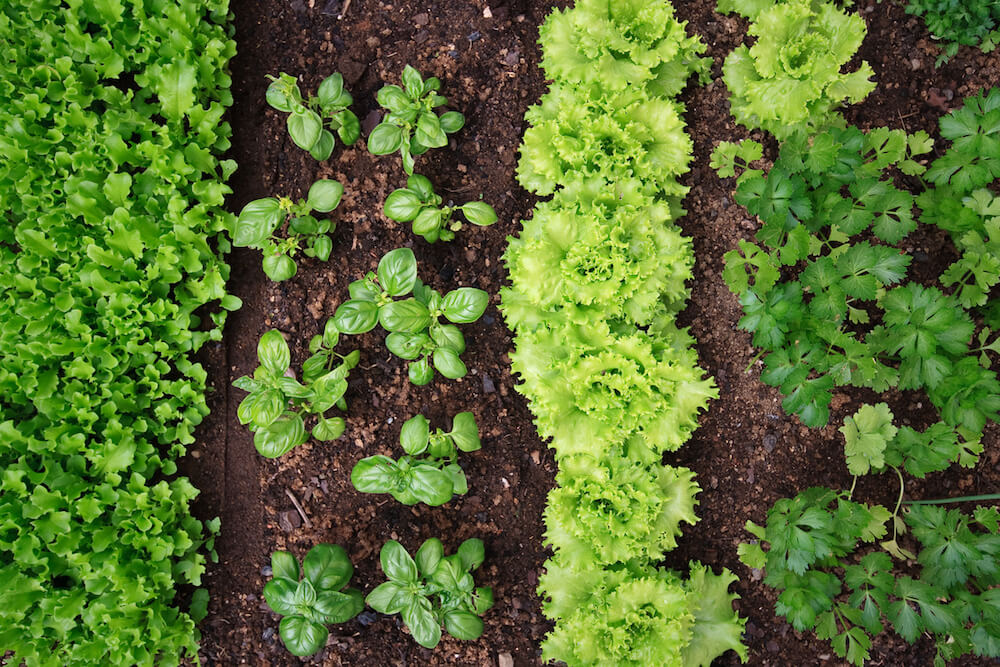New Jersey is the Garden State, but gardening doesn’t come naturally for many of us. However, the pandemic reignited interest in growing our own food. If you’re interested in joining the trend, here’s how.
Determine your climate zone.
Most of the Jersey Shore is in zone 7a or 7b, according to the USDA Plant Hardiness Zone Map. The zone where your home is located helps determine which crops will do well in your climate.
Decide what to grow.
Will you be planting a vegetable garden, herb garden, container garden, or a combination? What kinds of fruits and vegetables do you like to eat? How much space do you have for this project? If you only have room for a small garden, you’ll want to stick to smaller plants. As a beginner, start by choosing easy vegetables that are also productive. According to The Old Farmer’s Almanac, the easiest vegetables to grow are:
- Lettuce
- Green beans
- Radishes
- Tomatoes (bush variety or cherry are easiest)
- Zucchini
- Peppers
- Beets
- Carrots
- Chard, Spinach, or Kale
- Peas
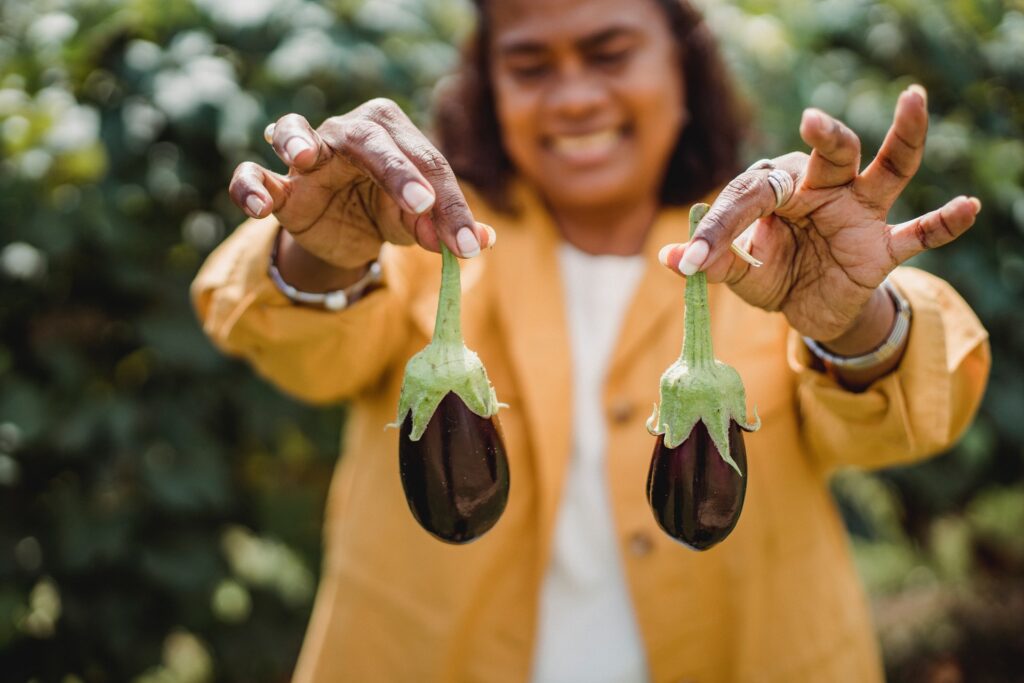
Decide where to grow.
Most vegetables require 6 to 8 hours of direct sunlight a day, so look for an area that receives enough full sun for what you want to grow. Most plants will thrive best on flat land buffered from the wind and not in a high-traffic area. Make sure the location drains well and doesn’t stay wet. Another option is to plant your veggies in a raised bed.
Test your soil.
Before starting your garden, we suggest that you have your soil tested. This can be done through your local USDA cooperative extension service office. A test will reveal the levels of phosphorus, potassium, calcium, magnesium, copper, manganese and zinc in your soil and its pH level. In most cases, the soil test report will provide recommendations for fertilizer and lime applications, if any is needed.
Make your plant bed.
If planting in a raised bed, a 4’ x 4’ or 4’ x 8’ is a good beginner size. A 10’ x 10’ garden (100 square feet) is manageable if planting in the ground. First, clear away any existing vegetation. Make sure to pull weeds out to the root so they don’t resprout. Once you’ve removed debris and grass away, spread a layer of compost on the growing area at least four inches thick. It’s best if your bed is no more than 4 feet wide so you can reach into the center without stepping onto the soft soil and compacting it.
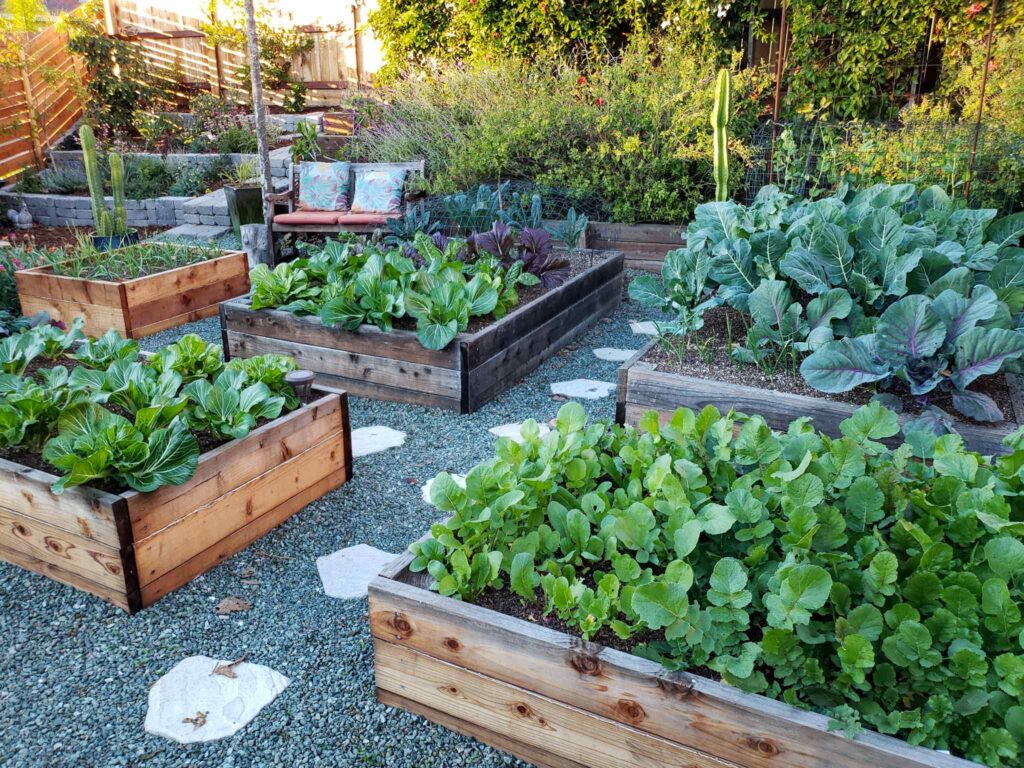
Buy your plants or seeds.
Pick 3 to 5 of your favorite vegetables and buy 3 to 5 plants of each one. Visit your local garden center to look for plants that are suitable for zone 7. If you’re starting from seed, compare the number of “days to maturity” listed on the seed packet to the length of your growing season. Zone 7a typically runs from April 15 to November 15 each year. Be sure to buy some flowers, such as marigolds, which discourage pests, attract pollinators and add color.
Get planting!
Plant your seeds or seedlings with care. When planting seeds, make sure to sow them at the proper depth indicated on the seed packet, tamp the soil firmly over them with the palm of your hand, and water them whenever the soil’s surface dries out. Don’t plant all your seeds at the same time. Stagger plantings by a few weeks to keep crops growing throughout the summer and fall.
When planting seedlings, carefully turn the pot over while putting your hand on top of the soil with the stem between your fingers. Gently squeeze the pot on all sides and slide it off. Grasp the mass of soil in your hands and massage it lightly until the roots are no longer stuck in the shape of the pot. If the plant is root bound, you’ll have to massage it more vigorously, perhaps even using a knife to loosen the mat of roots. Finally, use your hands or a small trowel to create a hole in the soil no bigger than the root mass. Position the plant, cover the roots with soil (make sure not to cover any part of the stem) and press it firmly into the earth.
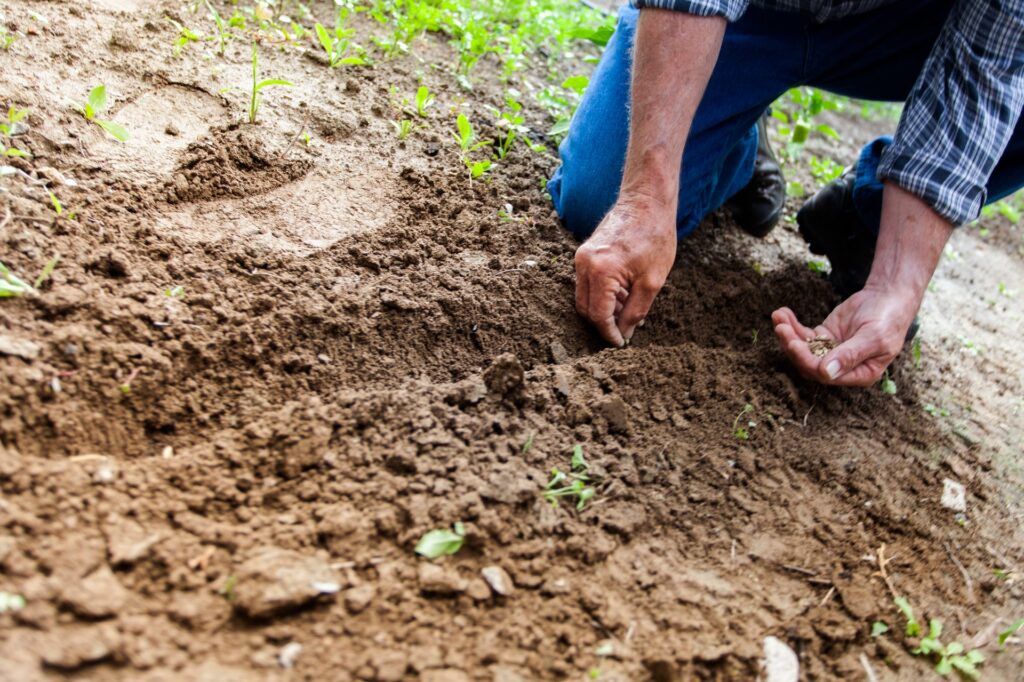
Water your plants.
Plants require about an inch of water per week during the growing season. If there hasn’t been rainfall, make sure you’re providing sufficient water. An easy way to check if plants are thirsty is simply sticking your finger two inches deep into the soil. If it feels dry, then it’s most likely time to water. But a word of caution: most plants are better off slightly dry than soaking wet. Too much water can cause harmful root rot. The goal is to make the soil moist but not soggy.
Use much mulch.
It’s important to match the right type of mulch with each crop. Wood chips are ideal for fruit trees, shrubs, perennial flowers, and other large, long-lived plants. Dainty vegetables prefer lighter mulch, like straw or leaves.
Maintain and care for your garden.
In general, spring maintenance focuses on keeping the weeds from getting a hold of the garden. Summer requires extra vigilance to keep the garden well-watered. Fall is the time for cutting things back and cleaning up. If your plants need help, they’ll tell you. For example, a yellow or deformed leaf is a sign that you should snip it off. A plant collapsing under its own weight needs to be staked. Dense, overgrown vegetation should be carefully pruned.
Lastly, have fun and experiment!
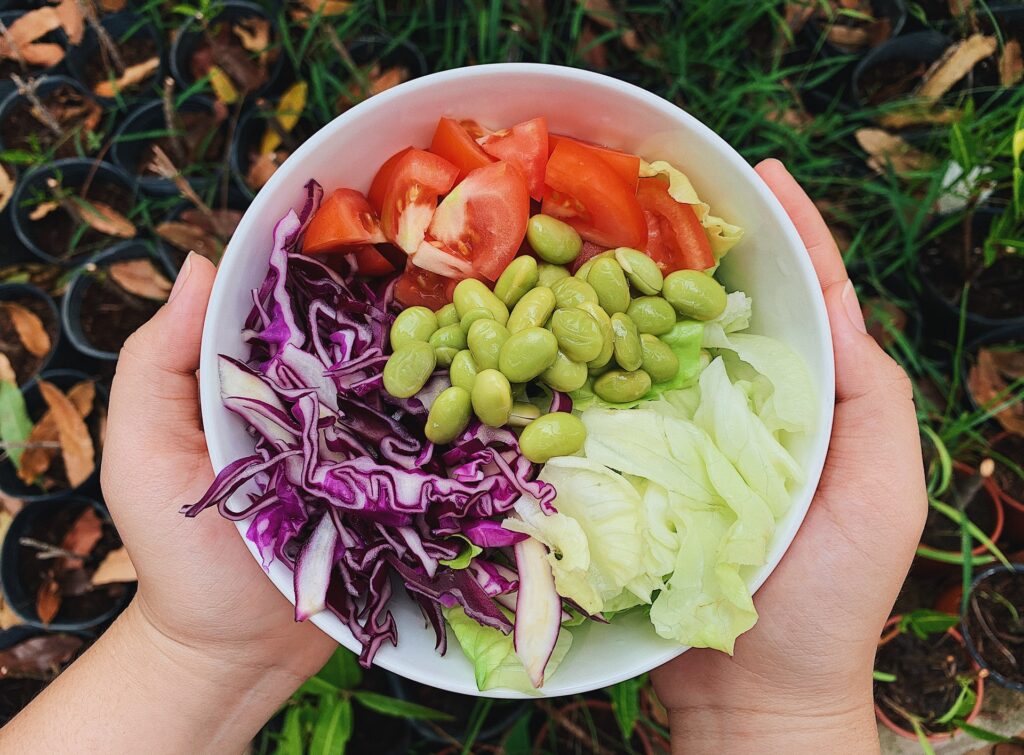
Sources:
https://www.masterclass.com/articles/how-to-start-a-backyard-garden
https://www.almanac.com/vegetable-gardening-for-beginners
https://www.gardeners.com/how-to/gardening-zones-7-10/7219.html
